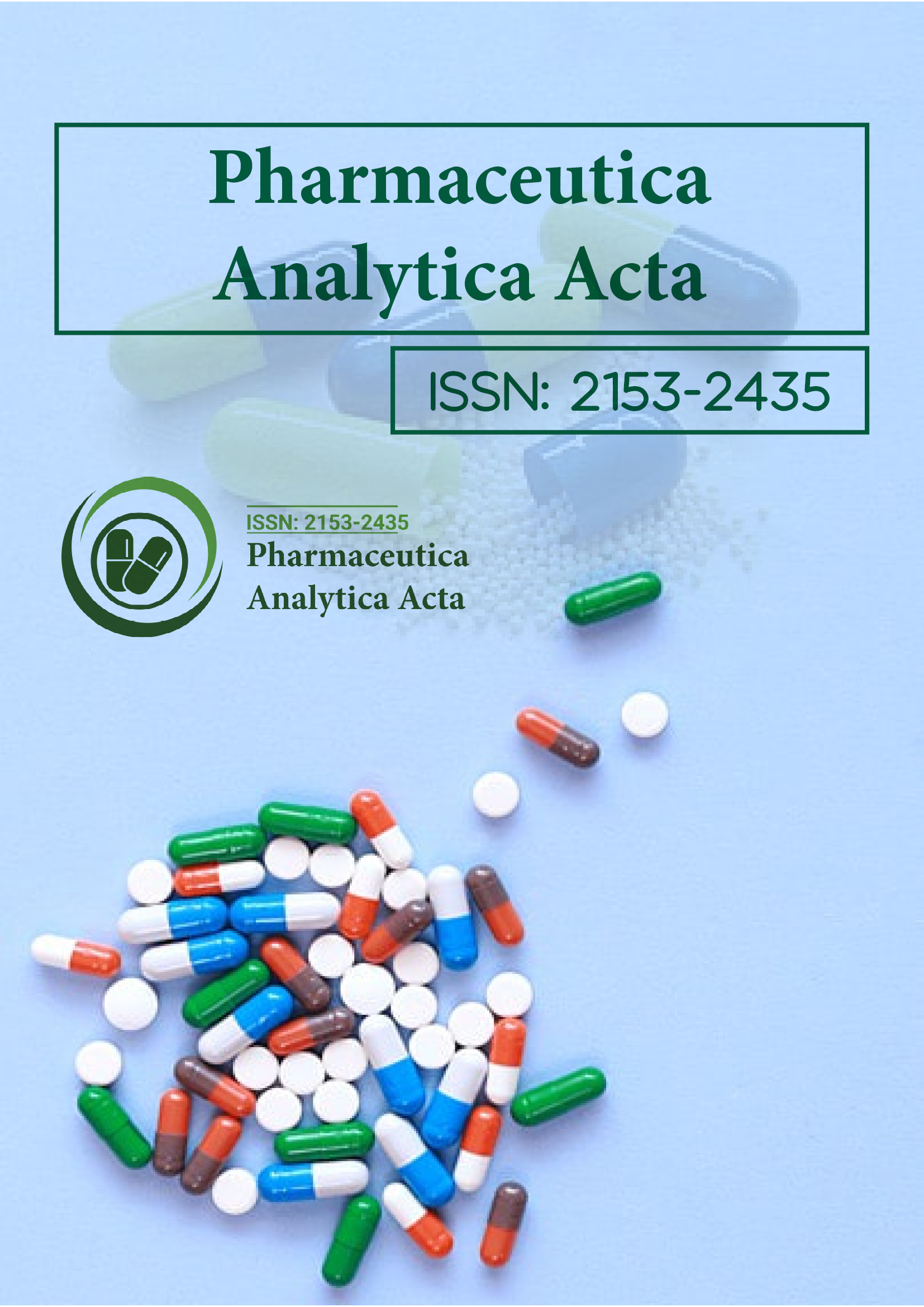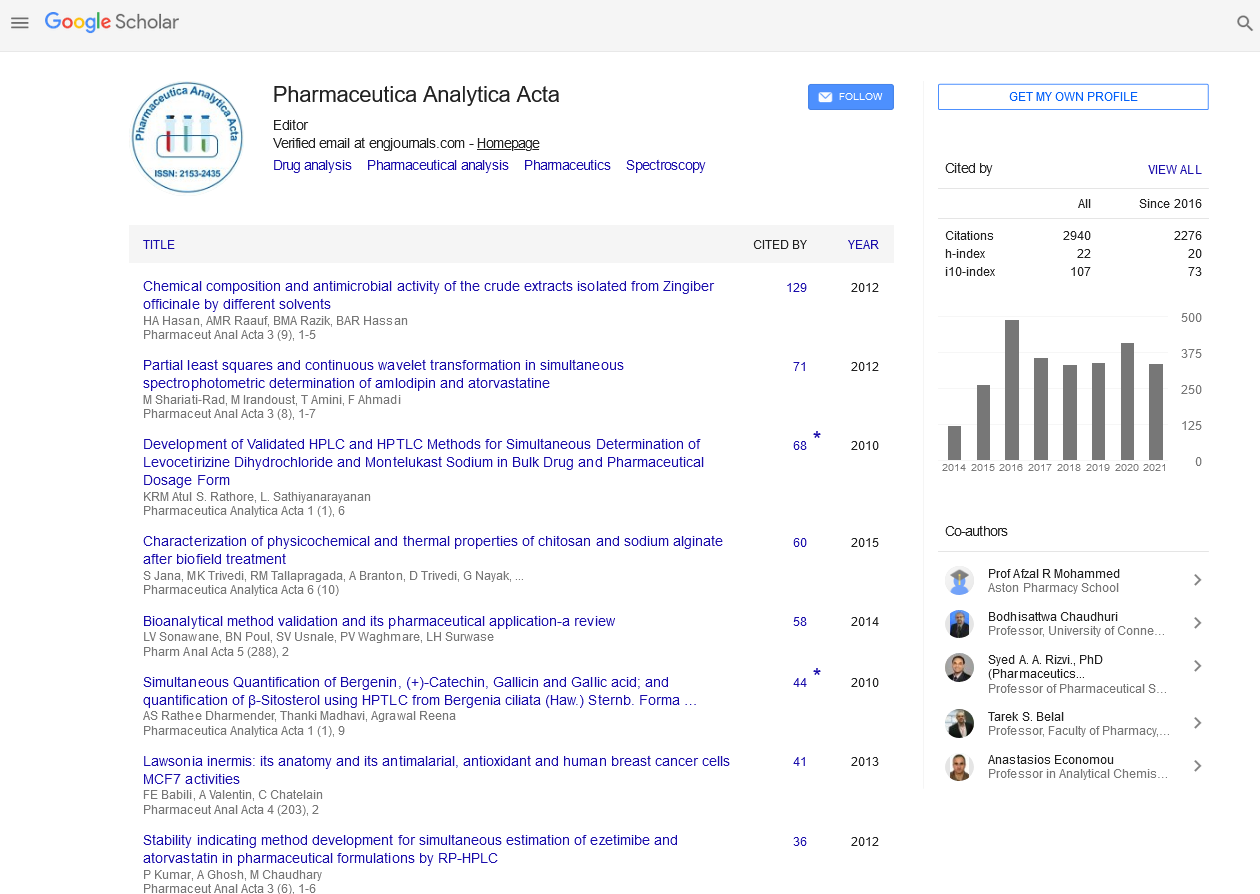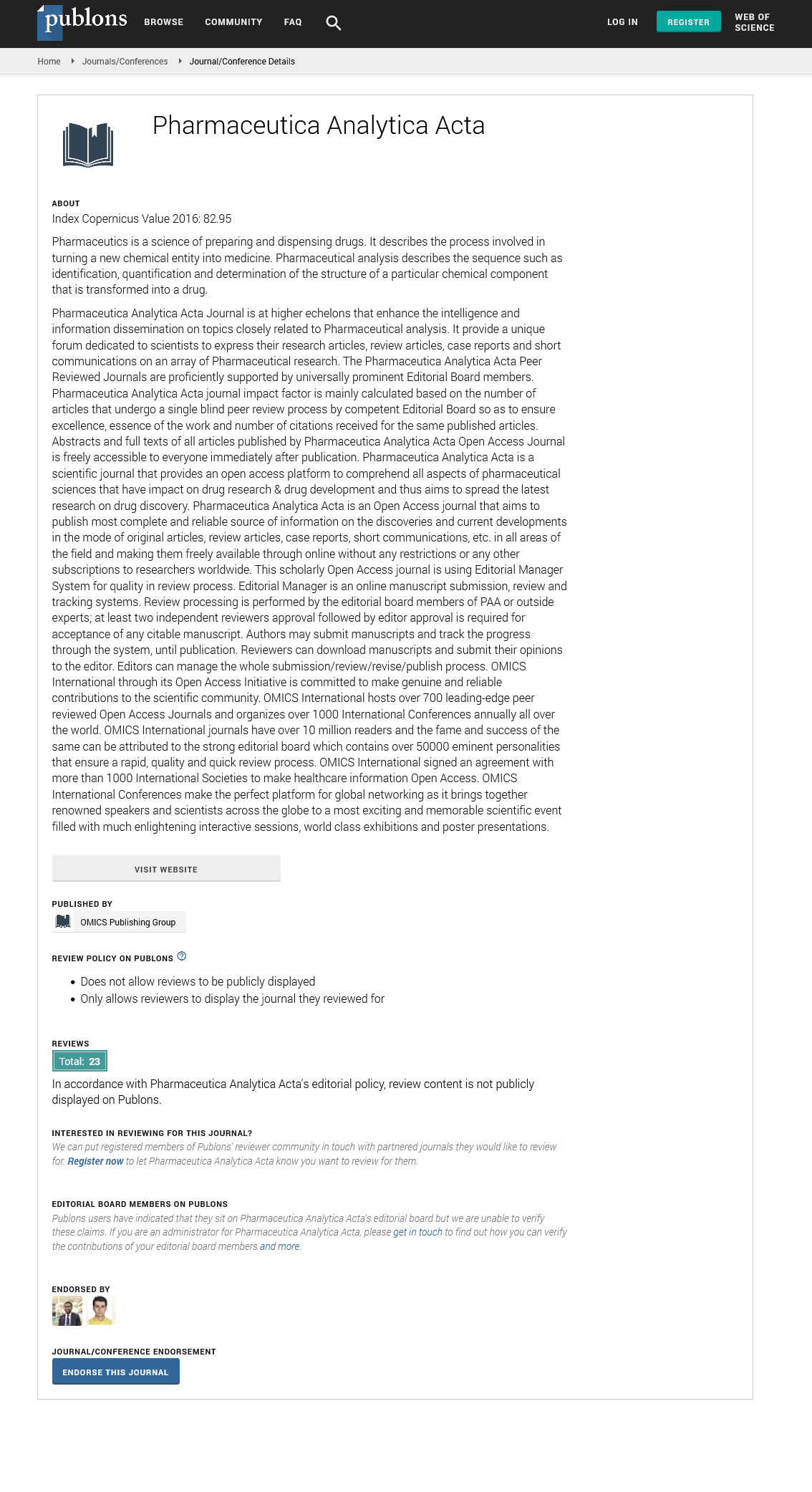Indexed In
- Open J Gate
- Genamics JournalSeek
- Academic Keys
- JournalTOCs
- The Global Impact Factor (GIF)
- China National Knowledge Infrastructure (CNKI)
- Ulrich's Periodicals Directory
- RefSeek
- Hamdard University
- EBSCO A-Z
- OCLC- WorldCat
- Publons
- Geneva Foundation for Medical Education and Research
- Euro Pub
- Google Scholar
Useful Links
Share This Page
Journal Flyer

Open Access Journals
- Agri and Aquaculture
- Biochemistry
- Bioinformatics & Systems Biology
- Business & Management
- Chemistry
- Clinical Sciences
- Engineering
- Food & Nutrition
- General Science
- Genetics & Molecular Biology
- Immunology & Microbiology
- Medical Sciences
- Neuroscience & Psychology
- Nursing & Health Care
- Pharmaceutical Sciences
Short Communication - (2025) Volume 16, Issue 3
Phytochemical Frontiers: Resolving the Role of Natural Compounds in NAFLD Management
Junfeng Zhu*Received: 22-Feb-2024, Manuscript No. PAA-24-25022; Editor assigned: 26-Feb-2024, Pre QC No. PAA-24-25022 (PQ); Reviewed: 11-Mar-2024, QC No. PAA-24-25022; Revised: 04-Jun-2025, Manuscript No. PAA-24-25022 (R); Published: 11-Jun-2025, DOI: 10.35248/2153-2435.25.16.823
Description
Non-Alcoholic Fatty Liver Disease (NAFLD) has emerged as a global health concern, mirroring the rise in obesity and metabolic disorders. While traditional pharmaceutical interventions exist, there is a growing interest in harnessing the therapeutic potential of natural products. This commentary article aims into the complex region of natural compounds and their potential in the treatment of NAFLD, clarifying the scientific advancements, challenges, and future directions in this field.
As the prevalence of NAFLD continues to escalate worldwide, there is an urgent need for effective therapeutic strategies. NAFLD encompasses a spectrum of liver conditions, ranging from simple steatosis to Non-Alcoholic Steatohepatitis (NASH) and, in severe cases, cirrhosis. Lifestyle modifications, including diet and exercise, remain cornerstones of NAFLD management, but the quest for additional, targeted interventions has led researchers to explore the rich repository of natural products.
Natural products, derived from plants, fungi, and other biological sources, have been used in traditional medicine for centuries. Their diverse array of phytochemicals, including polyphenols, flavonoids, alkaloids, and terpenoids, possesses a myriad of biological activities. These compounds have captured the attention of researchers for their potential to counteract the multifaceted pathogenesis of NAFLD.
Polyphenols, found abundantly in fruits, vegetables, tea, and red wine, have emerged as key players in NAFLD management. This section explores the hepatoprotective mechanisms of polyphenols, including antioxidant, anti-inflammatory, and antifibrotic effects. Compounds such as resveratrol, found in grapes, and curcumin, derived from turmeric, have demonstrated potential results in preclinical and clinical studies, opening methods for further research and development.
Alkaloids, with representatives like berberine from barberry plants, have shown promise in regulating metabolic homeostasis. This section explores the impact of alkaloids on insulin sensitivity, glucose metabolism, and lipid profiles, highlighting their potential as multifaceted agents in NAFLD management. The discussion extends to the challenges in translating preclinical findings into clinical applications and the need for rigorous research methodologies.
Terpenoids, widely distributed in essential oils and medicinal plants, have gained attention for their anti-inflammatory and anti-fibrotic properties. This segment explores the potential of terpenoids in mitigating liver inflammation and fibrosis, essential components of NAFLD progression. The article discusses compounds like silymarin from milk thistle and ursolic acid found in apple peels, emphasizing their impact on hepatic stellate cells and inflammatory pathways.
Despite the promising therapeutic potential of natural products, challenges abound in the area of research and development. Issues such as bioavailability, standardization, and potential herbdrug interactions demand attention. The commentary critically examines these challenges, providing insights into the complexities researchers face when translating preclinical findings into viable clinical applications.
As research advances, the prospect of combining natural products with conventional pharmaceuticals for synergistic effects becomes increasingly attractive. This section explores the potential for combination therapies in NAFLD management, examining preclinical evidence and discussing the rationale behind these approaches. The article also addresses the necessity for well-designed clinical trials to validate the safety and efficacy of such combinations.
The incorporation of natural products into patient-centric approaches is pivotal for successful NAFLD management. This segment provides practical insights into dietary recommendations, emphasizing the integration of natural products into daily nutrition. The discussion surrounds the role of healthcare professionals in guiding patients toward sustainable dietary patterns that leverage the benefits of natural compounds.
Conclusion
In conclusion, the current state of study, identifies gaps in knowledge, and outlines potential future directions in the field of natural products for NAFLD treatment. From resolving molecular mechanisms to designing targeted clinical trials, the commentary articulates the need for a concerted effort to harness the therapeutic potential of nature's pharmacy in the global fight against NAFLD. Pharm
In a world where the burden of metabolic diseases continues to rise, the exploration of natural products offers a motivation. As science advances and our understanding of the intricate interplay between these compounds and NAFLD deepens, the potential for effective, holistic interventions becomes increasingly tangible. This commentary serves as a guidepost for researchers, clinicians, and policymakers navigating the promising yet complex area of natural product-based therapies for NAFLD.Citation: Zhu J (2025) Phytochemical Frontiers: Resolving the Role of Natural Compounds in NAFLD Management. Pharm Anal Acta. 16:823.
Copyright: © 2025 Zhu J. This is an open-access article distributed under the terms of the Creative Commons Attribution License, which permits unrestricted use, distribution, and reproduction in any medium, provided the original author and source are credited.


